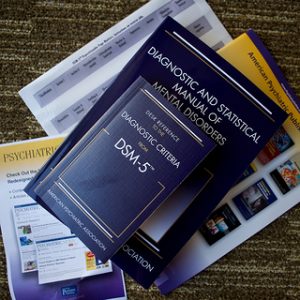DSM-5 Changes In The Diagnosing Of Eating Disorders
 The latest revision of the psychiatric diagnostic manual, the DSM-5, is now being used by clinicians. In it are a few changes to the way eating disorders will be assessed and diagnosed.
The latest revision of the psychiatric diagnostic manual, the DSM-5, is now being used by clinicians. In it are a few changes to the way eating disorders will be assessed and diagnosed.
The most significant change to the eating disorder category is the official recognition of binge eating disorder as a stand-alone diagnosis. There are also a couple symptom revisions in the anorexia and bulimia nervosa categories, and the inclusion of three diagnoses formerly listed elsewhere in the DSM-IV.
DSM-5 Changes in Anorexia Nervosa
Anorexia nervosa is characterized by symptoms of extreme dieting with drastic weight loss, an intense fear of getting fat, and having a distorted body image. In the DSM-5, two changes were made to the diagnostic criteria for this disorder.
- The DSM-IV criteria A stated, “Refusal to maintain body weight at or above a minimally normal weight for age and height.” The DSM-5 kept criteria A but eliminated the word “refusal.” Why? Assessing an individual’s intention regarding the symptoms of anorexia is difficult, if not impossible.
- The DSM-IV criteria D indicated, “…the absence of at least three consecutive menstrual cycles.” This criterion was eliminated in the DSM-5. Why? This criterion cannot be applied to many people with symptoms of anorexia such as young females, males, women taking oral contraceptives, and post-menopausal women. Plus, some women with all other signs of anorexia continue to menstruate.
DSM-5 Changes in Bulimia Nervosa
Bulimia nervosa is characterized by symptoms of binge eating followed by actions taken to avoid weight-gain such as self-induced vomiting.
The DSM-IV criteria included, “The binge eating and inappropriate compensatory behavior both occur, on average, at least twice a week for 3 months.” The DSM-5 reduces the frequency of binging and compensatory behaviors to at least once per week for 3 months.
DSM-5 Addition of Binge Eating Disorder
The DSM-IV did not recognize the problem of binge eating as a separate disorder. Individuals with symptoms of binge eating were given a seemingly generic diagnosis of “eating disorder not otherwise specified.” However, decades of research results have defined binge eating with a distinct profile of symptoms now to be recognized by clinicians.
Binge eating criteria includes overeating at least once per week for 3 months, accompanied by a lack of control and emotional distress. Other criteria are:
- eating quickly, faster than normal
- eating past the point of fulness; being uncomfortably full
- eating large portions though not actually hungry
- eating in isolation to avoid embarrassment
DSM-5 Other Eating Disorder Changes
In the DSM-IV, the disorders of pica (eating non-nutritive substances), rumination (effortless regurgitation of food), and avoidant/restrictive food intake were listed in a chapter called Disorders Usually First Diagnosed in Infancy, Childhood, or Adolescence. Because this chapter is not in the latest revision, these three disorders are now in the DSM-5’s section on eating disorders.
source: Psychiatric News
 Eating Disorder Self Test. Take the EAT-26 self test to see if you might have eating disorder symptoms that might require professional evaluation. All answers are confidential.
Eating Disorder Self Test. Take the EAT-26 self test to see if you might have eating disorder symptoms that might require professional evaluation. All answers are confidential.